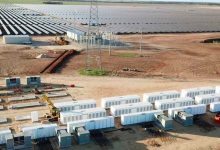Good news for Angus Taylor, the minister for lowering energy prices and the minister for lowering emissions, and for the rest of us for that matter.
The biggest owner of network infrastructure assets in Australia, Spark Infrastructure, says the transition to renewables will not just lower emissions, it will cut prices for consumers too, and significantly. But it warns that the lack of federal policy is getting in the way, delaying the transition, and likely making it more expensive than it needs to be.
This not exactly a secret – although it might be to readers of Murdoch and other mainstream media. But it is not often expressed so clearly by big business as it was this week by Rick Francis, the CEO of Spark Infrastructure, which has interests in the low voltage network in renewables-dominant South Australia, two regional networks in Victoria, and the Transgrid transmission network.
“The electricity grid is rapidly transforming to meet the energy demands of future generations and has the potential to significantly reduce the cost of electricity to consumers,” Francis says in notes to a presentation to the RBC Renewables and Energy Transition conference.
“We are very much focused on investing for the future and leading the change to a cleaner future. We try not to think about disruption, technology change, market evolution, returns and so forth in 6 month terms or even 5 year regulatory terms, as we are putting assets to work with time horizons of 30-50 years.”
Network companies are “technology neutral”, as the federal government likes to describe itself. But they are not daft.
They can see the trends in technology costs and development. And, like most people thinking carefully about this, see the need for transmission lines to transport cheap power from diversely located wind and solar, and for local networks absorb new technology that will change the way people buy and use electricity.
“In the not too distant future, it is easy to envisage an Australian energy system with millions of homes and businesses with rooftop solar, a battery system, a charging station for an electric vehicle and a household energy management system.”
Solar PV is having an impact now, and batteries and electric vehicles will follow, Francis says, noting that any new additional capex requirements in local networks over the next five years will be modest, although a bow-wave may appear post 2025.
 Spark is also keen to invest in new transmission lines – such as the proposed link from South Australia to NSW, that will allow that state to meet its area of net 100 per cent renewables, and the creation of renewable energy zones and upgrades links between other states and the proposed Snowy 2.0.
Spark is also keen to invest in new transmission lines – such as the proposed link from South Australia to NSW, that will allow that state to meet its area of net 100 per cent renewables, and the creation of renewable energy zones and upgrades links between other states and the proposed Snowy 2.0.
Although it is having a whinge about the rates of return that now apply on its investment, a wash-back from the widely agreed “gold plating” and excessive returns on investment that were mandated a decade ago.
But Francis says the transition is being slowed by a lack of progress in federal policy, and out-dated rules and regulations. This is affecting investment in both infrastructure and in new renewable energy projects.
“As it was reported this week by the Clean Energy Council, investment in renewable generation is slowing,” Francis says. “We’re seeing this as well, both from an investor’s perspective as well as from the network side.
“A lack of clear policy and a system designed in the 90’s are exacerbating matters. The ESB (Energy Security Board) has recently commenced a post 2025 – System design review, a clear example of the pressing need to rewrite the rules, but arguably it has come too late, and the issue is now how we transverse the intervening period.
“We are concerned that a lack of national policy, uncoordinated government interventions and out-dated regulatory systems will hold back the investment required to deliver the transformation of the energy sector to the long-term detriment of consumers.”
Spark earlier this year made a hugely significant move when it made its first investment in large scale renewable energy, buying the 120MW Bomen solar project near Wagga Wagga.
It is being built by its Victorian-Based unregulated business – Beon Energy Solutions.
“Bomen is our first step-out into a close adjacency, being renewable generation,” Francis says. “We specifically liked it because of its excellent location and its strong PPA off-take agreements that underpin revenues for 10 years.”
Spark also likes the fact that investments in solar farms such as Bomen are likely to generate higher returns than the low but steady rate gained in network infrastructure. It wants to buy more wind and solar projects and is not short of choice.
“Since we announced our acquisition of Bomen Solar Farm and our interest in building a portfolio in contracted renewable generation, we have received a lot of inbound enquiries.” And that reflect the state of the market, a huge pipeline of potential projects and few opportunities.
“It is … evidence that the industry and development of opportunities is slowing with uncertainty in price curves, and concerns around grid stability and connection leading to material risks around such things as: curtailment, run-back schemes, MLFs and additional capital requirements for extra plant such as harmonic filters and synchronous condensers.










